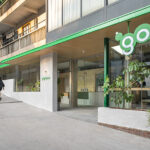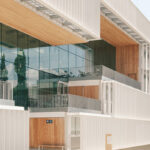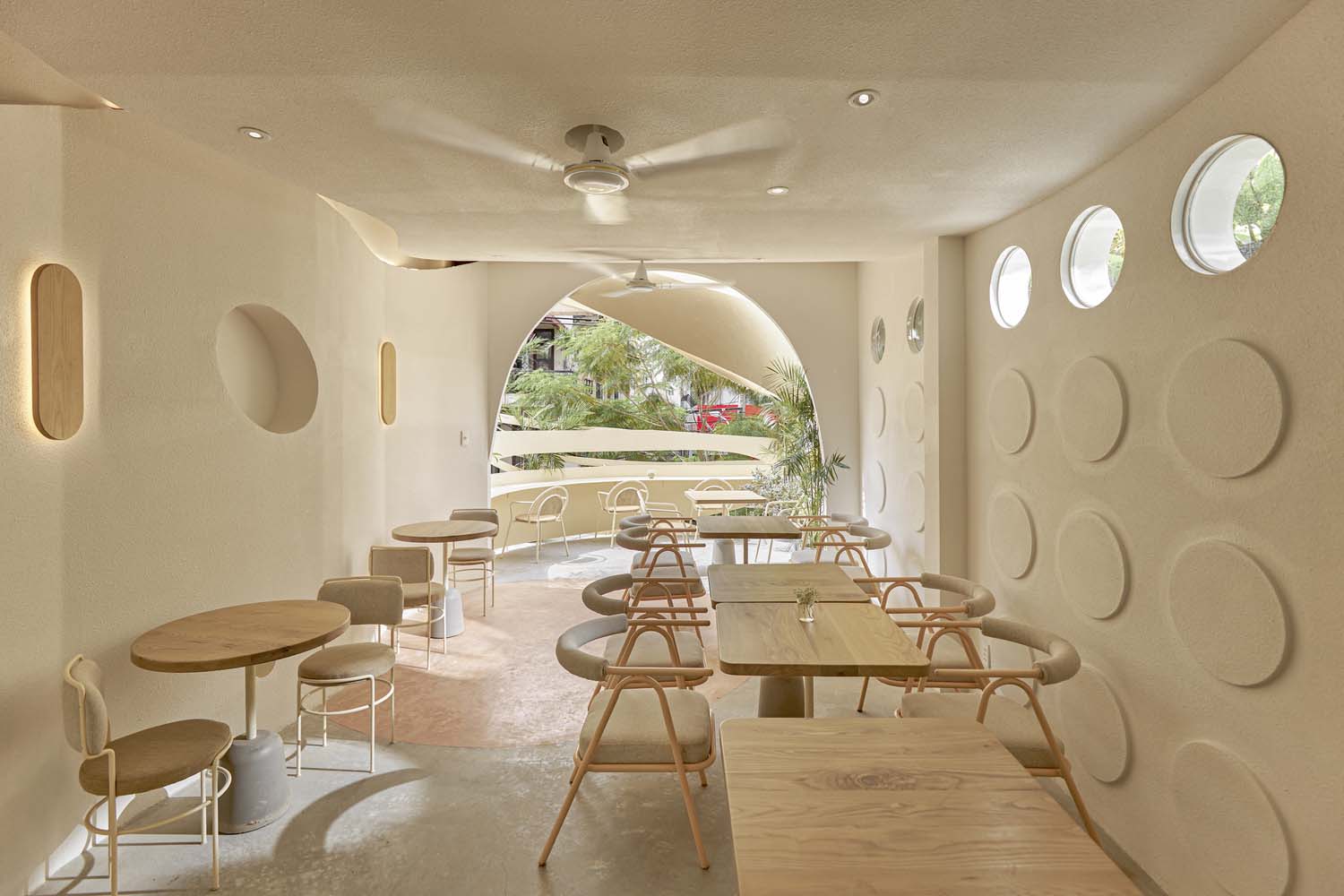
In today’s fast-paced world, modern café architecture is undergoing a remarkable transformation, driven by the increasing demand for sustainability and eco-conscious design. Café owners and architects are embracing innovative approaches that create inviting and aesthetically pleasing spaces and contribute to a greener and more sustainable future.
With that in mind, this article will discuss how sustainable materials revolutionize modern café architecture.
-
Redefining Spaces With Eco-Friendly Options
Among the myriad of eco-friendly materials, one stands out for its versatility and strength: the shipping container cafe. These repurposed containers reshape the café scene, offering a unique blend of industrial aesthetics and environmental responsibility. The inherent structural strength of shipping containers allows for minimal additional materials, reducing construction waste.
Furthermore, the industrial chic that comes with these structures appeals to a contemporary audience looking for unique dining experiences. By repurposing these containers, café owners are reducing the demand for new construction materials and contributing to a culture of upcycling and sustainability.
-
Embracing the Past With Reclaimed Wood And Bamboo
Reclaimed wood brings warmth and history to the modern café, telling a rich story through each grain and knot. This material is creatively incorporated in various ways, from wall cladding and flooring to furniture and accent pieces. Each use of reclaimed wood is a conscious decision to reduce deforestation and the carbon footprint associated with new lumber.
Similarly, bamboo is establishing itself as a renewable star in café design. Its rapid regrowth rate makes it a highly sustainable choice, and its versatility allows for a wide range of applications, from structural elements to decorative details. Bamboo’s natural aesthetic creates a calming and inviting space, connecting customers with the environment while they enjoy their café experience.
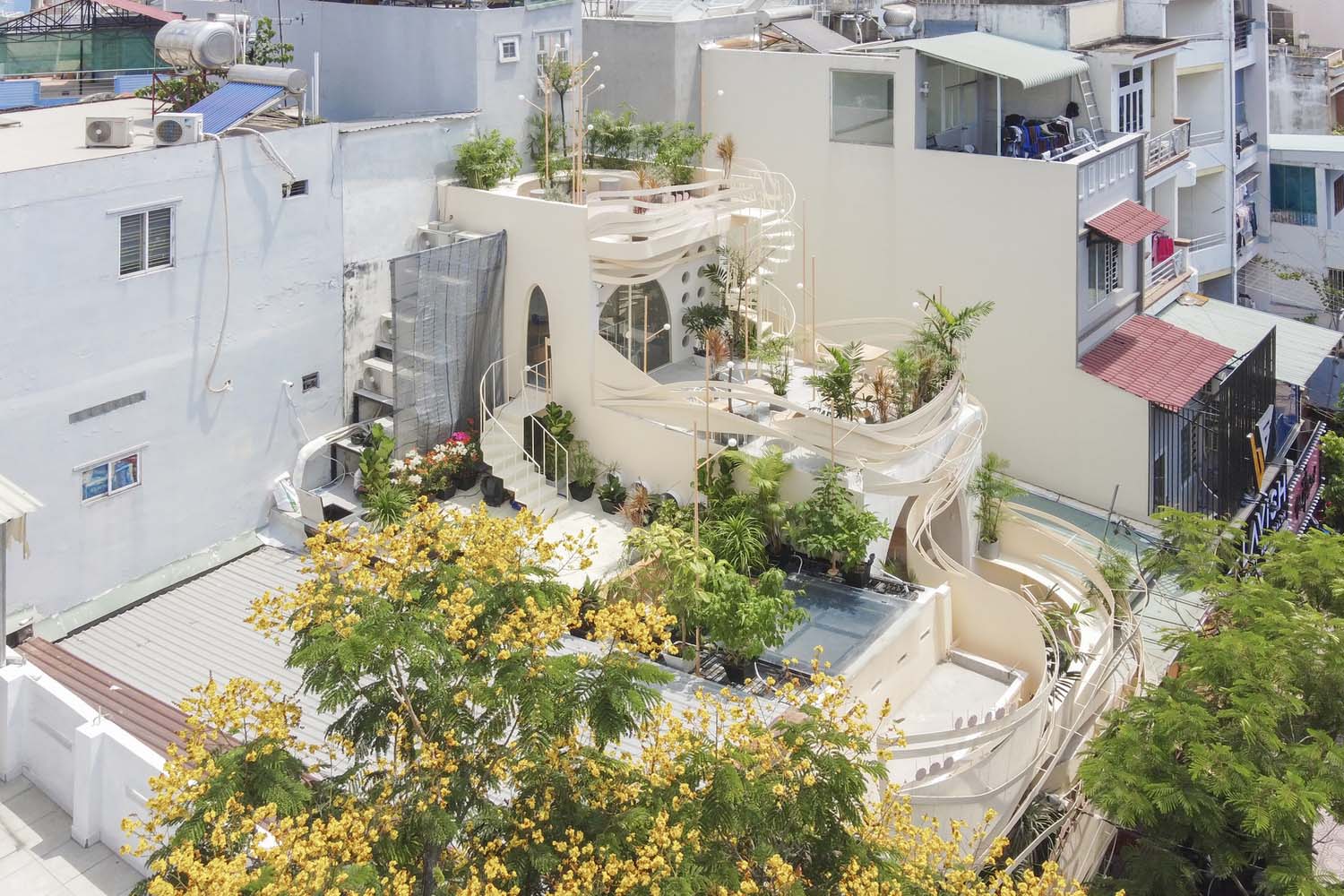
-
Innovative Use Of Glass And Natural Light
The strategic use of glass in modern café design transcends functionality; it becomes an artistic statement emphasizing transparency and light. Architects are pushing the boundaries, utilizing double-glazed units, smart glass that can change opacity, and even photovoltaic glass that can generate electricity from sunlight.
These innovations enhance the aesthetic appeal of cafés and contribute to a sustainable energy profile. By embracing these technologies, cafés offer a bright and energizing atmosphere that encourages customers to return, not just for the coffee but for the experience of light-infused spaces that blur the lines between the indoors and the natural world outside.
-
Elevating Eco-Friendly Design with Green Roofs and Living Walls
Green roofs and living walls are not just decorative features; they are dynamic ecosystems contributing to the café’s sustainability. These green installations can provide year-round benefits by selecting various plants that thrive in different conditions. In colder months, they add an extra layer of insulation, reducing heating needs, while in warmer periods, they help cool the building, lessening the reliance on air conditioning.
Green roofs can also manage stormwater by absorbing rain, which helps to reduce urban runoff and the stress on city drainage systems. On the other hand, living walls can act as natural air filters, removing pollutants and producing oxygen, which is particularly beneficial in urban areas where air quality is a concern. Together, they transform a café into a living part of the urban landscape.
-
Choosing Sustainable Textiles And Finishes
When it comes to the interiors, every detail matters. Sustainable textiles go beyond organic cotton or linen; they encompass a broader range of materials like recycled polyester or fabrics made from upcycled plastic bottles.
These choices support a circular economy and reduce waste. Similarly, finishes in a café are selected with health and environment in mind. Low volatile organic compounds (VOC) or VOC-free paints and varnishes are preferred for their minimal impact on indoor air quality, ensuring that the café is safe for employees and customers.
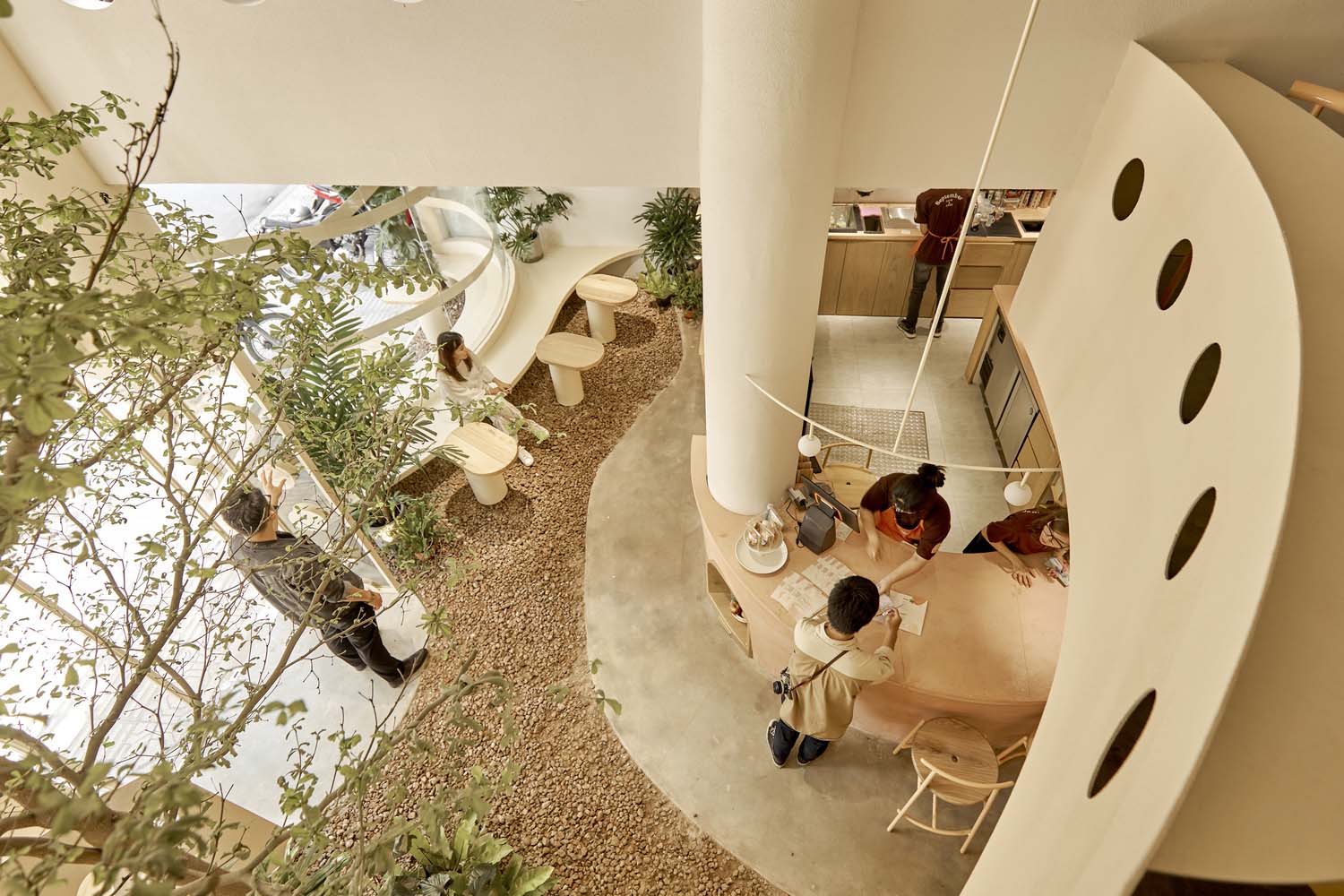
-
Considering Innovative Insulation Techniques
Energy efficiency is a cornerstone of sustainable architecture, and cafés are no exception. Beyond traditional materials, architects and designers are exploring bio-based insulation made from cork, straw bales, and mushroom mycelium. These organic materials offer excellent thermal properties, are renewable and biodegradable, and have a low embodied energy, meaning the total energy required to produce them is minimal.
By incorporating cutting-edge insulation materials, these establishments maintain comfortable temperatures year-round, reducing reliance on heating and cooling systems. The result is a cozy customer environment and lower energy bills, demonstrating that sustainable practices suit the planet and business.
-
Harnessing Renewable Energy
Cafés are increasingly showcasing the potential of renewable energy in commercial spaces. Beyond solar panels and wind turbines, innovative establishments are tapping into less conventional sources like geothermal systems and biomass energy. Geothermal heating and cooling systems take advantage of the earth’s stable underground temperature to regulate the café’s climate efficiently.
Biomass energy systems, using organic materials like wood chips or coffee grounds, can be converted into heat or electricity, adding a layer of resourcefulness to the café’s operations. By harnessing renewable energy, cafés are pioneering a path towards a more sustainable future for the food service industry.
The transformation of café architecture with sustainable materials is more than an aesthetic evolution – a commitment to environmental stewardship and social responsibility. By making conscious choices about materials, design, and operations, cafés are becoming beacons of sustainability in their communities. These spaces offer more than just food and beverage; they provide a glimpse into a future where every aspect of their built environment is harmonious with the natural world.
All images from September Cafe by Red5studio and Ben Decor.


